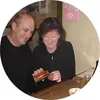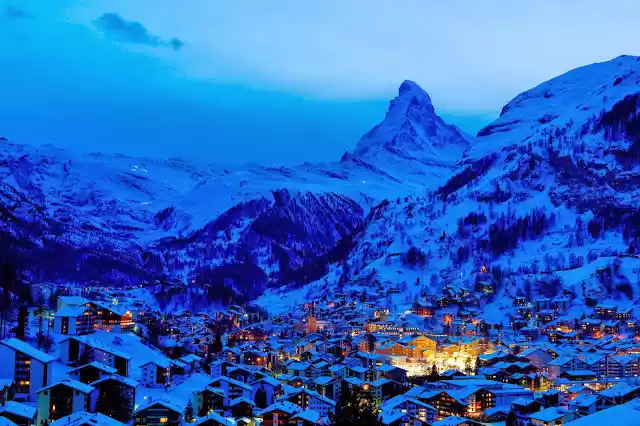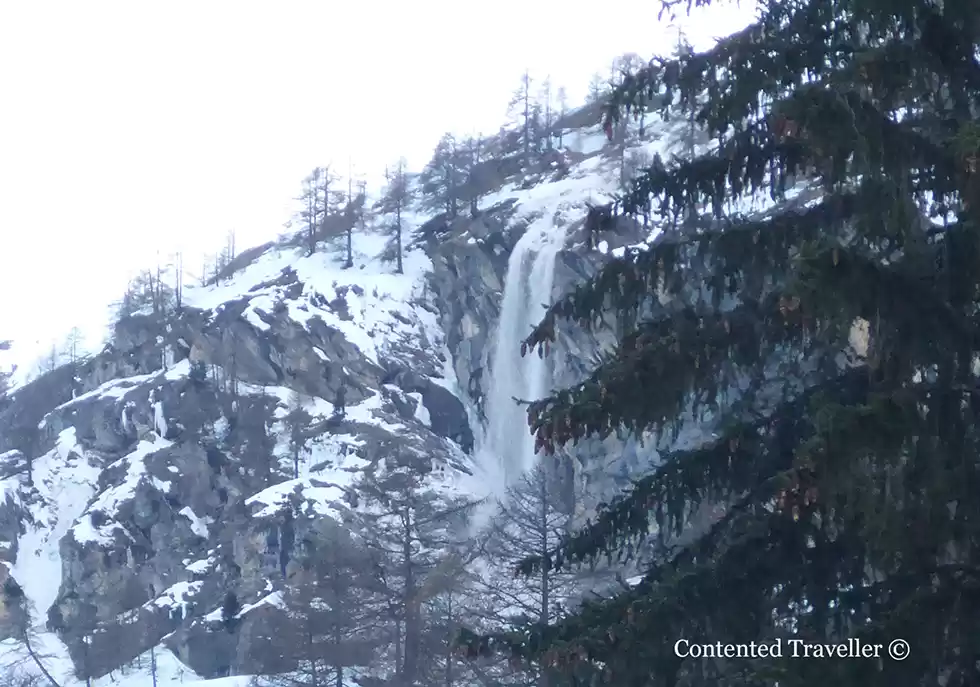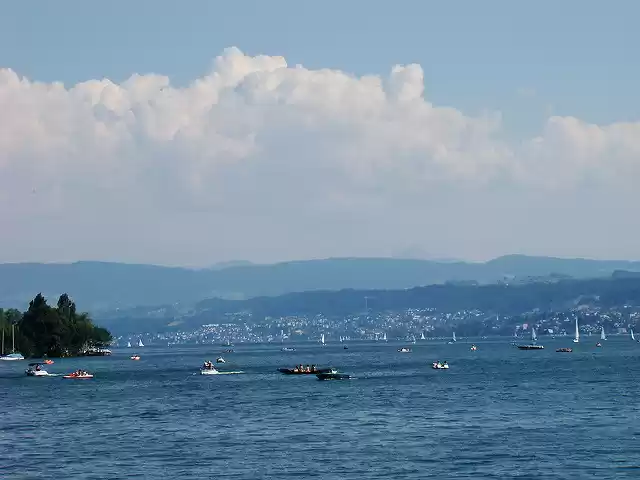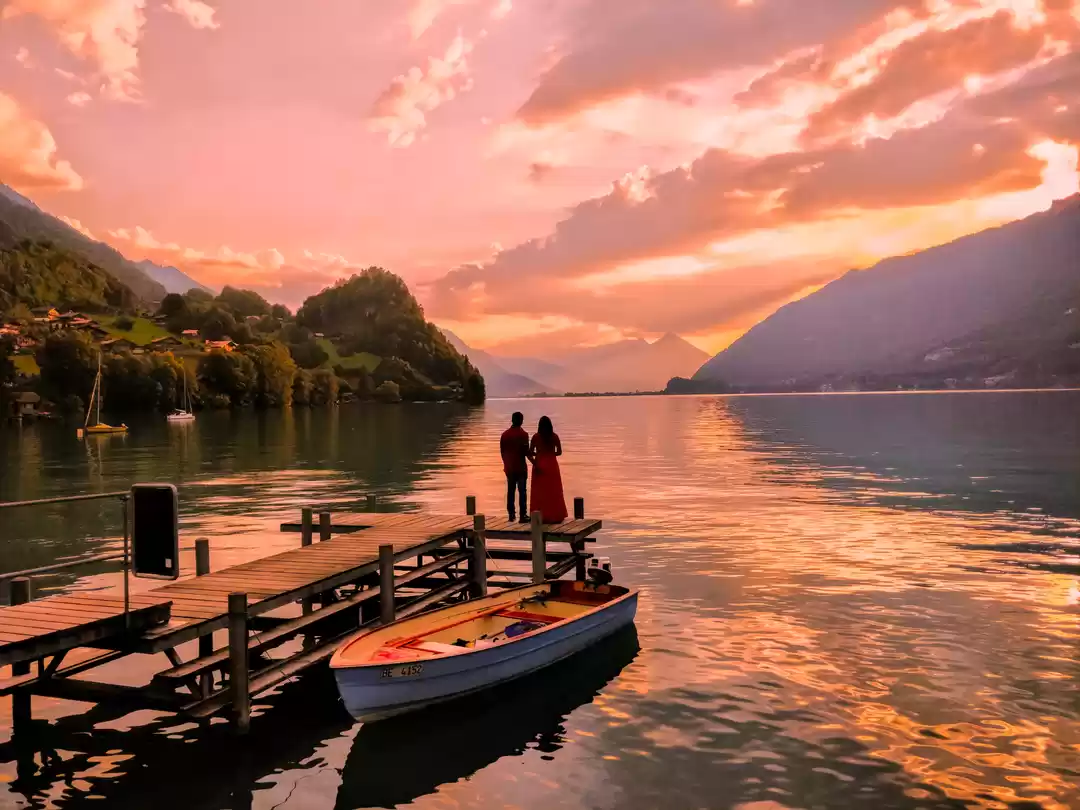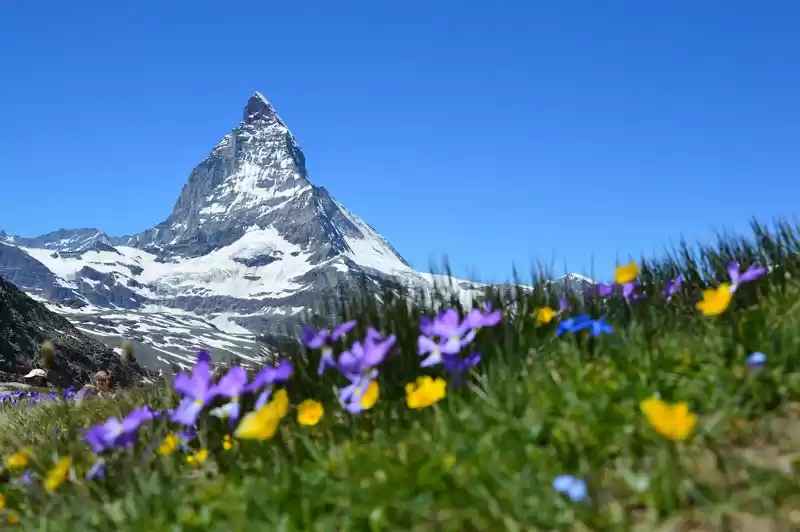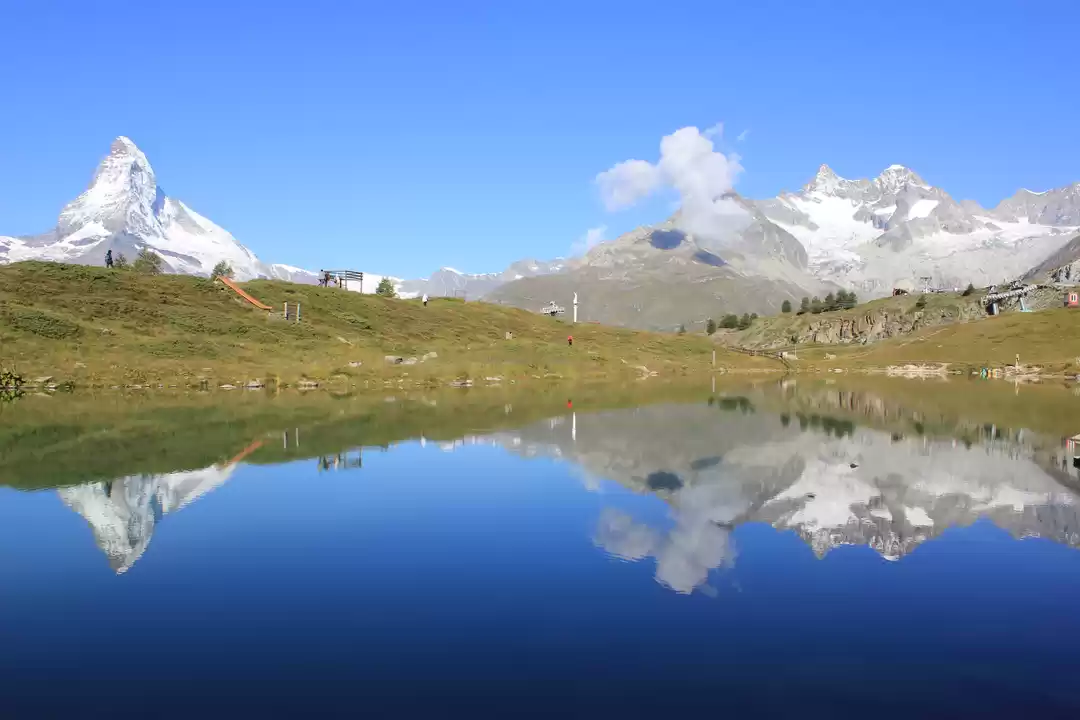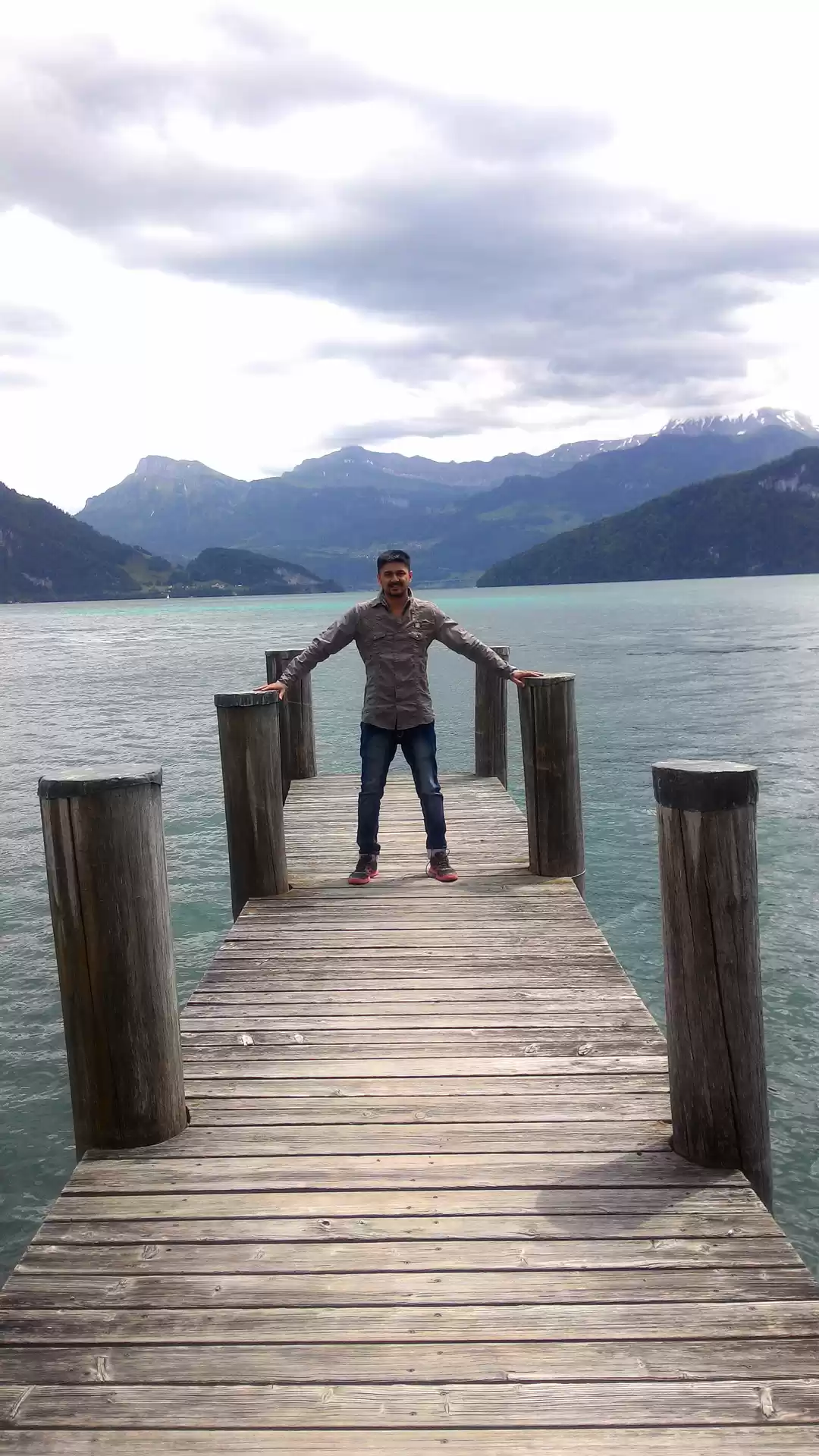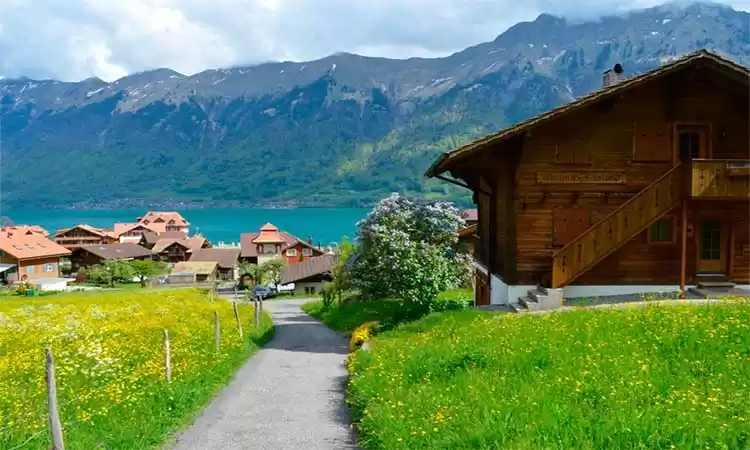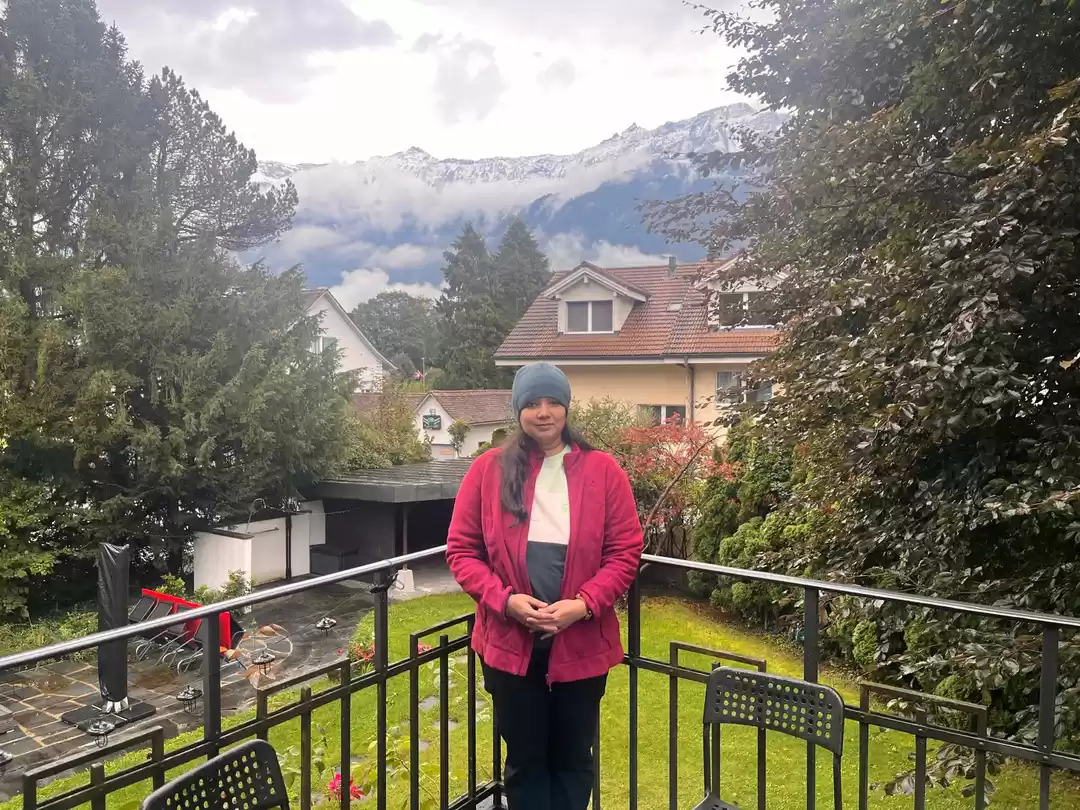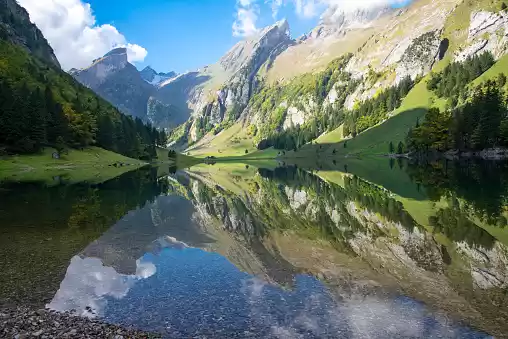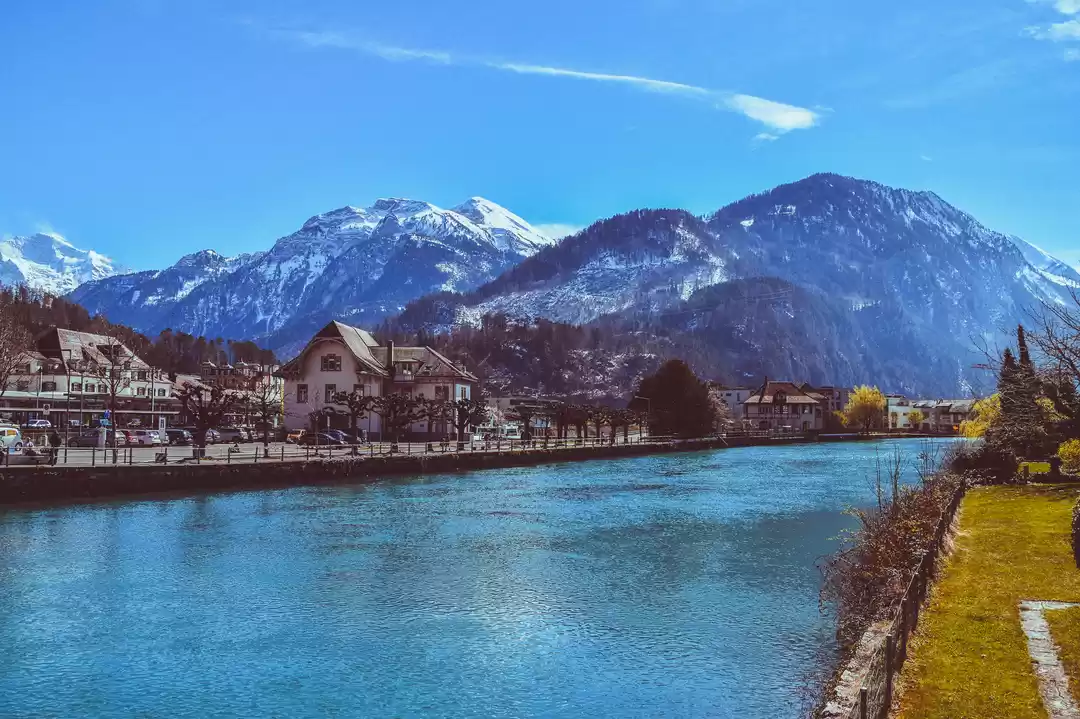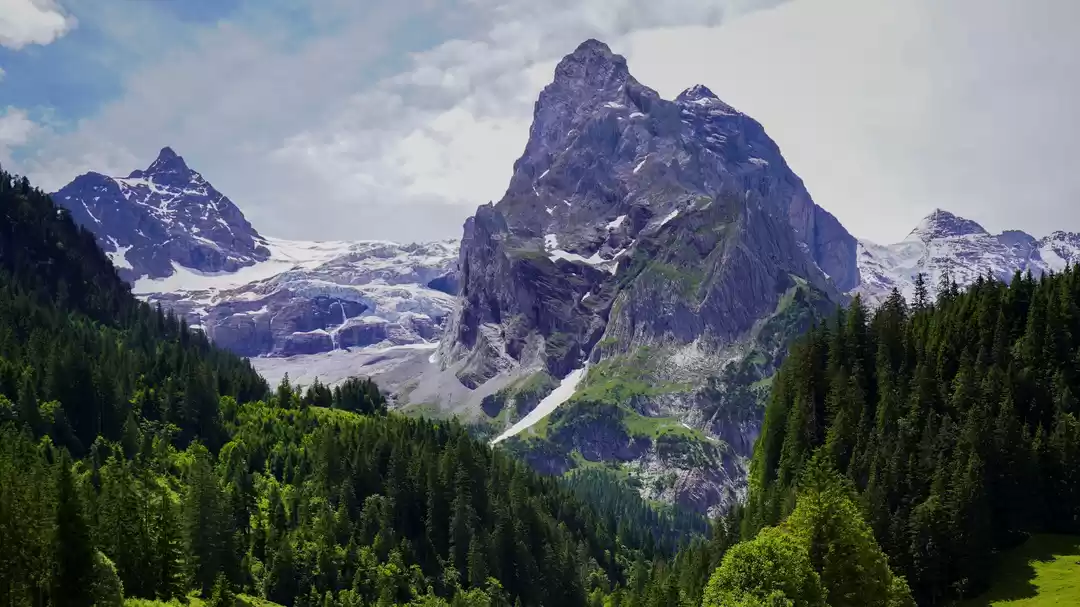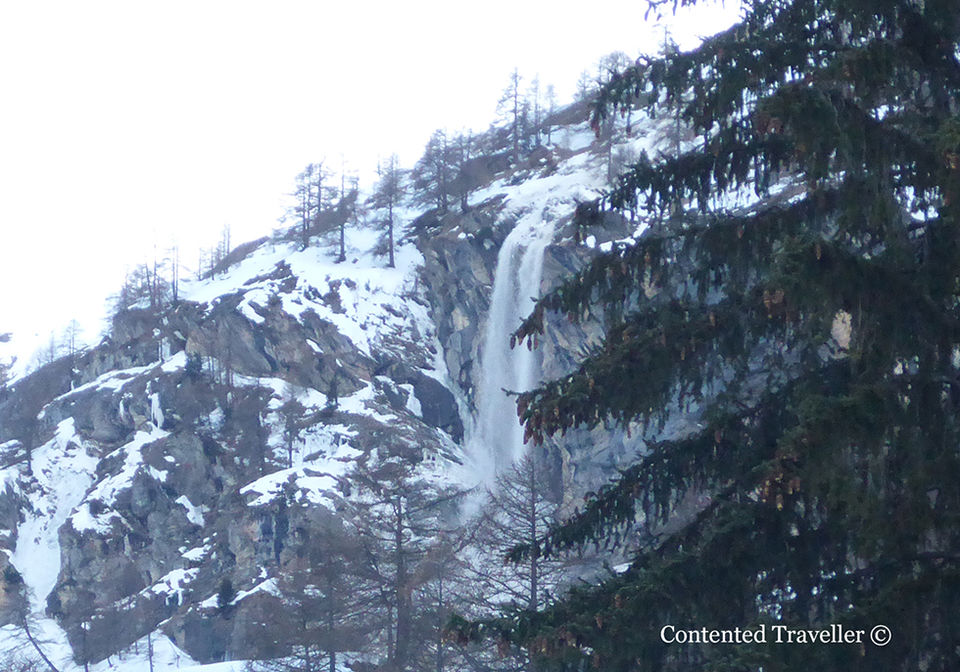

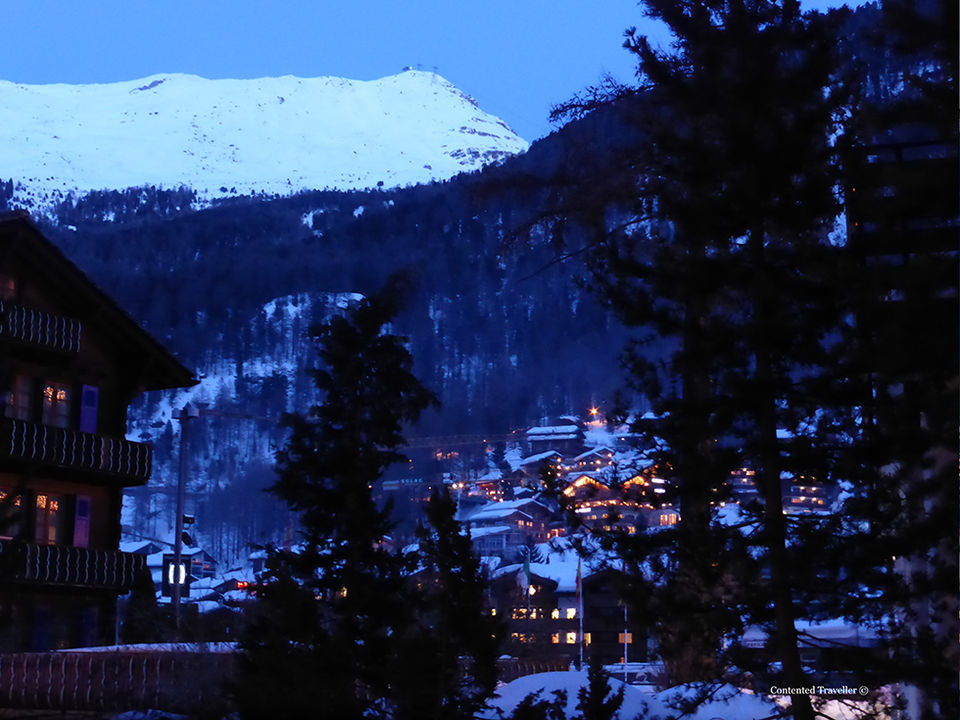
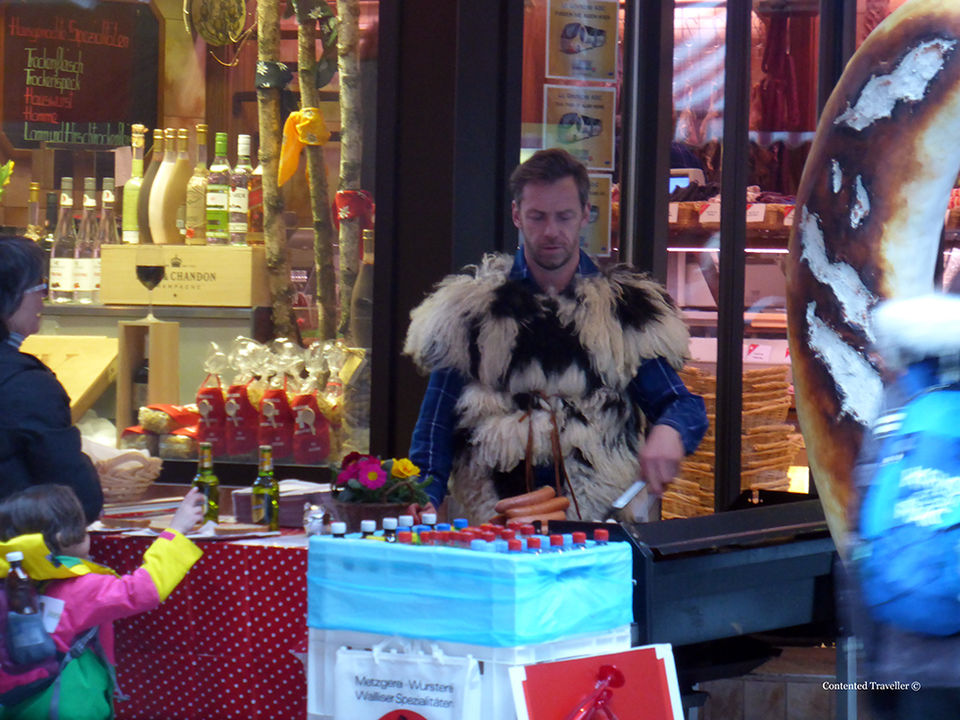
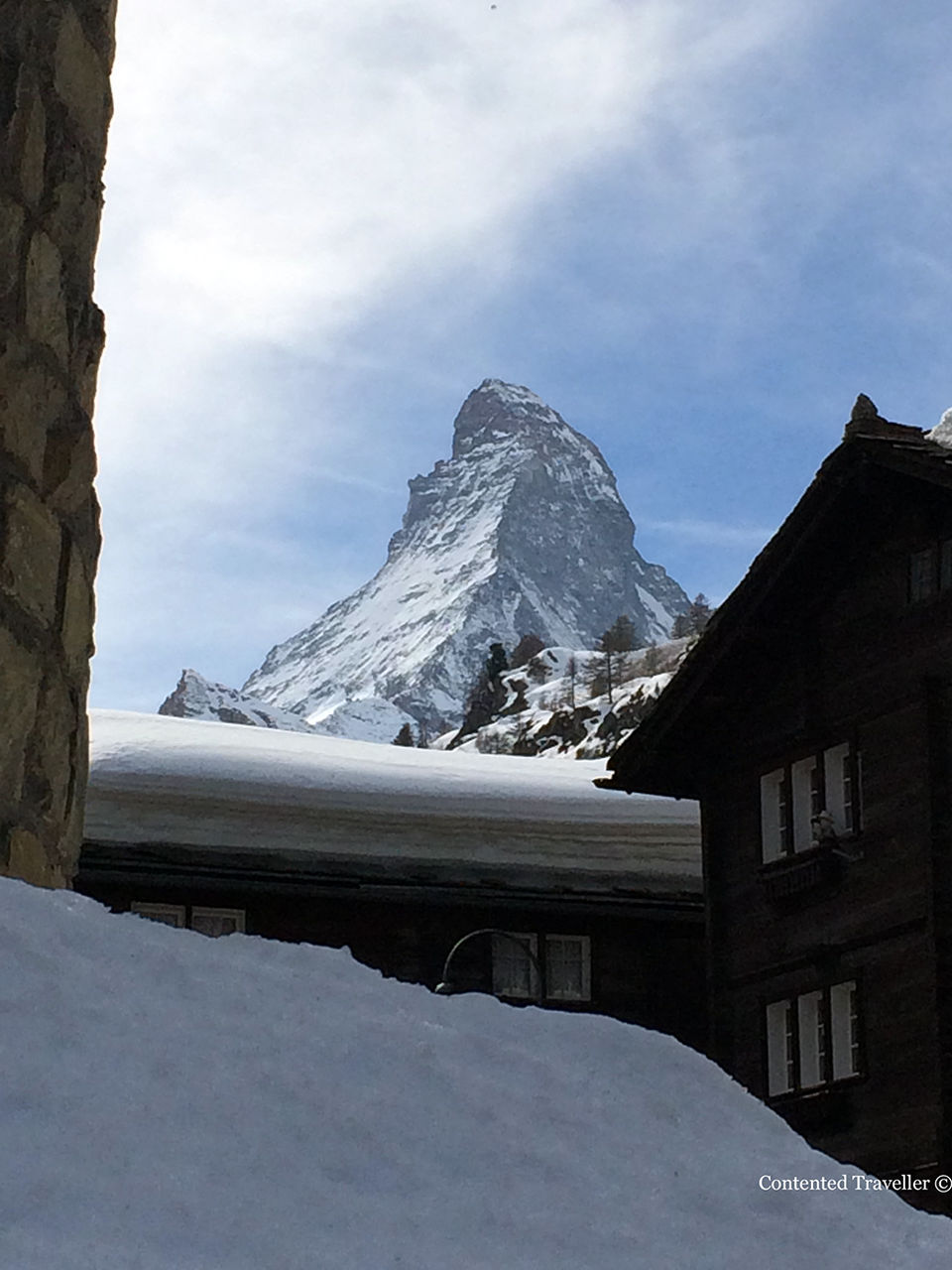
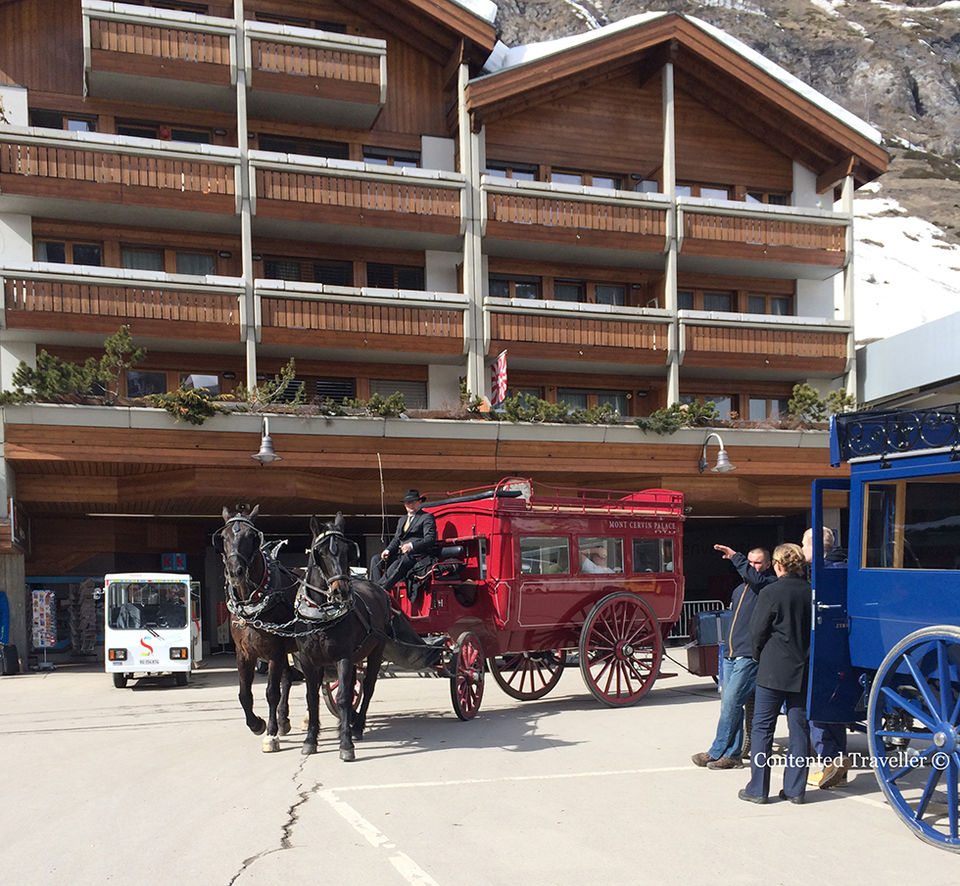
The main street of any town is worth exploring to see what it has by way of explanation of the area. It is well known however that this is often the façade of a village or town and getting off the main road will in actuality give you a better understanding of the place.
That doesn’t mean that you shouldn’t take advantage of what the town wants to display as its first impression. We arrive by the Gornergrat train from Visp, which is an breathtaking ride along massive mountains and very deep ravines and just a few tunnels.
We step off the train and are immediately on the Bahnhofstrasse in Zermatt, the main street. What greets us are church bells ringing to herald that it is 1pm. The next thing we hear are other bells and these are those of the horse drawn carriages that line the little square. Horse drawn carriages were the main form of transport just 40 years ago. Beside these carriages we see the electric cars of which Zermatt is renowned as it is a car free zone in respect of the stunning environment and Zermatt’s attempts to preserve it natural splendour.
We see alpine style houses and know that we are in Switzerland. We see wooden shutters of various colours and snow covered roofs.
We drag our bags through the slushy streets as spring is starting to melt the snow in the village though there are still quite a lot of icy patches to take caution with. My boots have a really good grip but I may well purchase the walking poles that so many people in Switzerland use to make sure that they stay sure footed.
We hear so many different accents in the Bahnhofstrasse of Zermatt and find out that indeed the mix of people is changing a lot. In summer it is a very popular place with Japanese but in winter it tends to be Germans, the British and Russians. We walk past designer sports and clothing shops, Rolex shops by the dozen, sun drenched cafes and a real mix of people. We smell food wafting from the shops and we read menus of various places and note that there are many Michelin star and Gault Millau restaurants in this village and on the slopes. We go to the grocery shop where we note that the price of food and goods is surprisingly reasonable.
We see skis and snow boards everywhere as we see snowshoes and walking poles. We see the mountains with trees and snows and the various trails that people are taking to the different gondolas and trains to take them to the higher slopes and the guaranteed snow and many different pistes, as well as the renowned sun decks.
We hear lots of bangs echo throughout the valleys and the people stop, come out of shops as we all watch a controlled avalanche fall down the mountain. This happens again and again during the afternoon in an attempt to keep control of a very real threat.
We see many old farms buildings built of logs called Gädini with roof shingles made of flat stone slabs, which is typical of roofs of the Valais-style buildings.
Zermatt is a village in the canton of Valais in Switzerland, a predominantly German speaking area, though it appears to us to be quite multilingual having heard French, German and English from café workers.
We walk past the Zermatt Museum knowing that we will be going there later and we see many tributes throughout the village to the alpinists – the mountain climbers. We are catching glimpses along the Bahnhofstrasse of Zermatt of what we really want to see, and that of course is the mighty Matterhorn.
The Bahnhofstrasse of Zermatt has provided us with ample food for thought and so many ideas, opportunities and possibilities. Zermatt has made a very good first impression.

